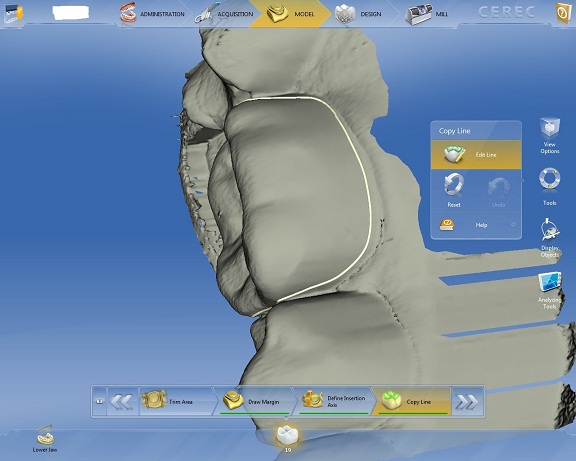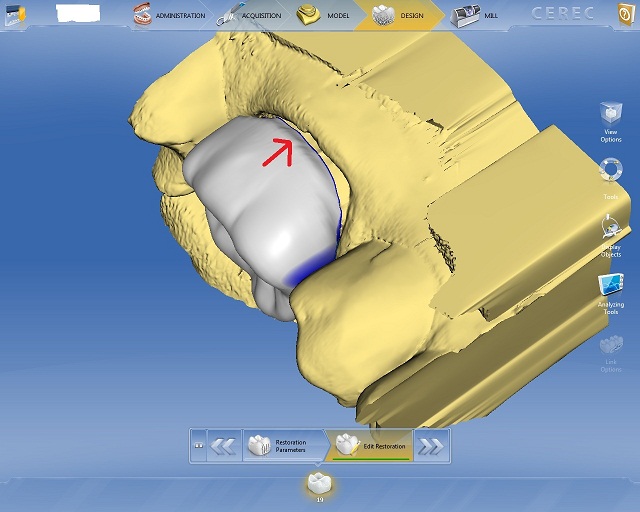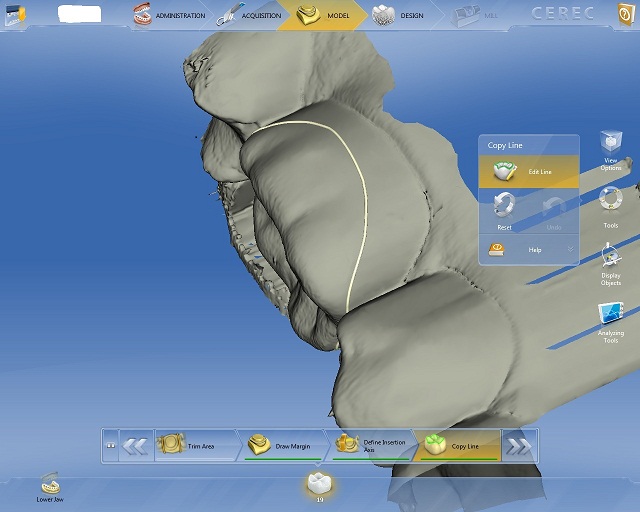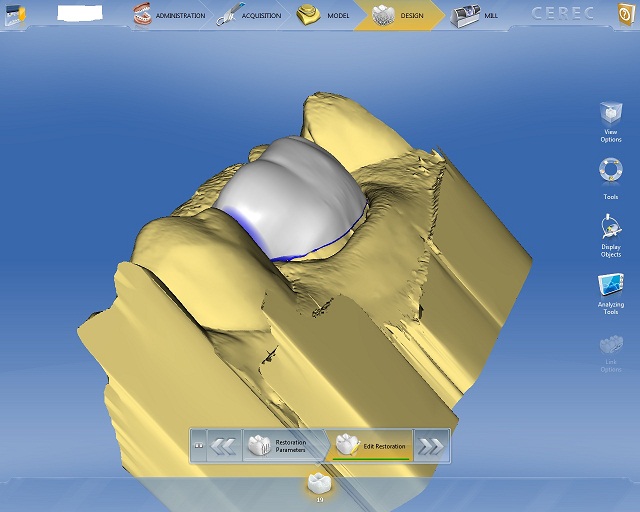Since some would consider me a CEREC old-schooler since I've been using CEREC for almost nine years, then you should know the mantra by which I was taught in 2003: "Correlation is King." All the instructors would tell us that because the computer-generated tooth library (at the time called Dental Database), was not exactly predictable.
We were taught to copy our pre-op condition, or improve it with composite and then copy it. It was the easiest and most efficient way to finish. With the advent of Biogeneric and Buccal Bite and how amazing it was, I stopped doing so much Correlation – but I still loved doing it. Correlation is now known as Biogeneric Copy. New name, same basic function.
When I started teaching with the Bluecam, I would instruct doctors to take a roll shot on the buccal and lingual to pick up as much good information as possible, and then redraw the copy line close to the margin and get an exact rendering of the preoperative condition. That is still possible, but when we draw our copy line, everything inside the circle copies one-to-one, and everything outside the copy line is rendered via Biogeneric.
I have found with the new software, if we draw the copy line too close to the margin we will tend to get a roll near the margin, which we have to try and fill in and then smooth out.
What we have determined is that if you don't draw the line so close to the margin on the buccal and lingual, the software has an easier time of blending in that transition from the copy line to the margin.
When trying to copy an abutment crown under a partial, you may need to drop that copy line closer to the gum line to insure the most intimate fit against the clasps. Other than that, keep the copy line a bit higher and away from the margin, and you'll get a nicer blend with less work to do on the proposal with the tools.
Hope this helps.


 Rich Rosenblatt
Rich Rosenblatt 



